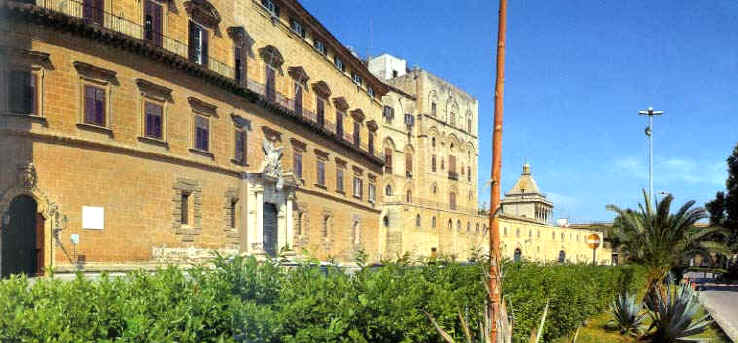|
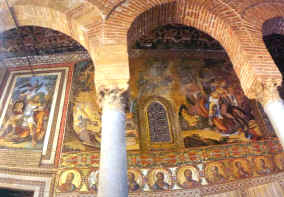
|
| The
portico on the first floor of the Maqueda courtyard leading to the
Palatine Chapel, with Egyptian granite columns, the original
external structure of the Palatine
Chapel
|
|
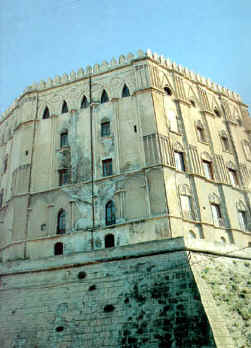
|
|
Because of its historical and artistic significance,
the Norman Palace is one of the greatest monuments in Palermo. In the
9C, the Arabs structured and fortified the “Qasr” as a castle, on
the site of a pre-existing Punic-Roman stronghold. After 1130 (when
Roger II was crowned King of Sicily) the Normans extended and
strengthened the original building with towers and bastions, making it
the main fortress in the city and a sumptuous royal palace. In which the
political and economic life of the State was administered until the
death of Frederick II of Swabia. Under Frederick, the Palace also became
a centre of civilisation and culture of European dimension. The Palatine
Chapel, indeed a religious jewel, was built by Roger II, who wanted it
to be incorporated inside the Palace. Begun in 1130, the Chapel was
consecrated in 1143 and dedicated to St. Peter. From the late 13C, after
the end of the Norman-Swabian dynasty, the political and economic life
in Sicily began to decline and the Palace lost its importance as a
political and administrative centre. In fact, it was abandoned and
neglected until the 15C, the only exception being the Palatine Chapel
that continued to be looked after by the clergy in charge of it. Under
the Spanish viceroys, in the second half of the 16C, the building became
once again a royal residence and underwent considerable alterations. The
Norman towers were demolished and the present imposing façade was built,
together with the spacious internal courtyards: the 17C Maqueda
courtyard, in the middle of the triple portico with limestone arches,
and the so-called “fountain” courtyard. The most obvious traces of
the Norman period are Torre Pisana (the Pisan tower), Roger’s Room in
the Joaria and the Palatine Chapel. Since the post-war period the Norman
Palace has been the seat of the Sicilian Regional Assembly. |
|
Roger’s Room in the Joaria, the part of the Palace
where Norman and Swabian kings used to spend long hours of recreation
and relax, surrounded by the royal court and by scientists, poets and
distinguished men-at-arms and statesmen. Here Frederick II, a poet
himself, gathered the most talented personalities of the time, giving
impetus to the Sicilian School of Poetry where, as acknowledged by
Dante, the first poems in the Italian language were written. The gilded
mosaics decorating the room depict figures of birds, swans, peacocks,
deer, lions, leopards and centaurs. The fine mosaic cycle was started
under Roger but completed during the reign of William I known as the
Good.
|
|
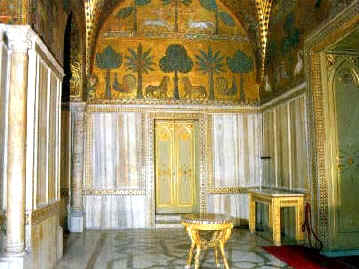
|
| The
"Roger’s Room" with its mosaic decorations, revealing
the eastern figurative tradition of Arab craftsmen, who left their
evocative artistic and scenographic imprints. |
|
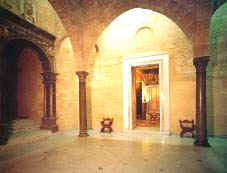
|
| The
"Sala dei Venti" (Rooms of the Winds), leading to King
Roger’s Room in the Joaria tower. |
|
